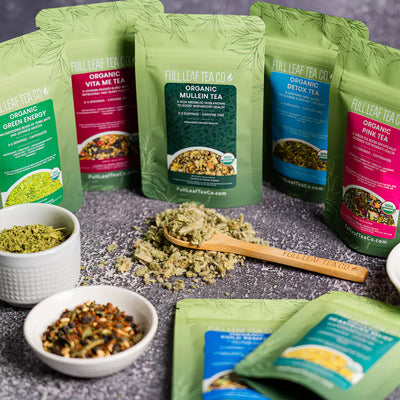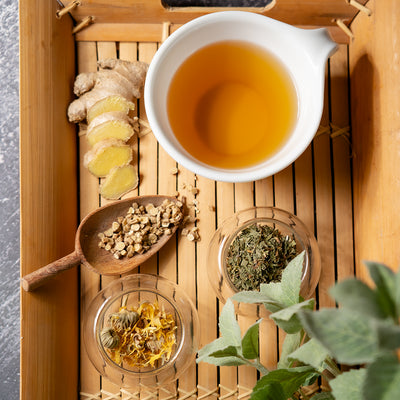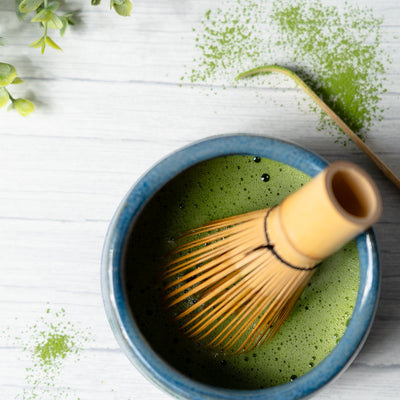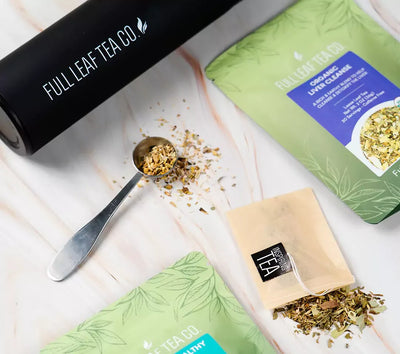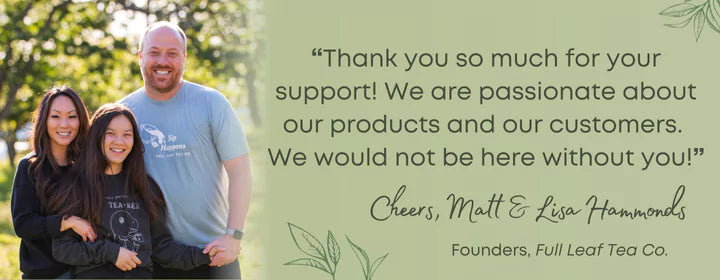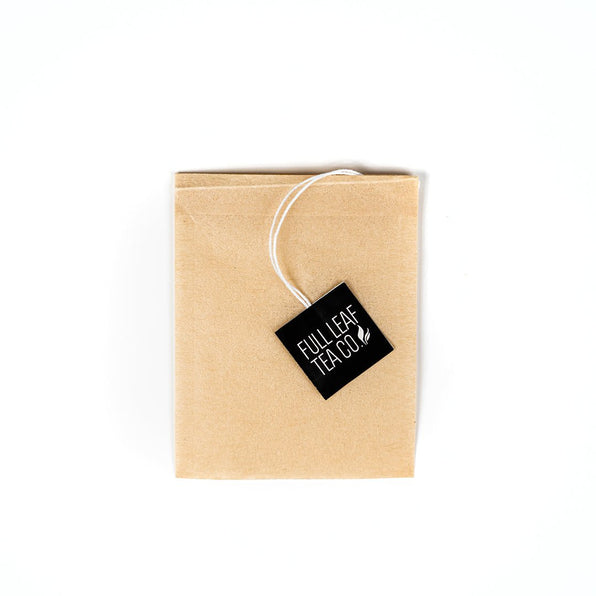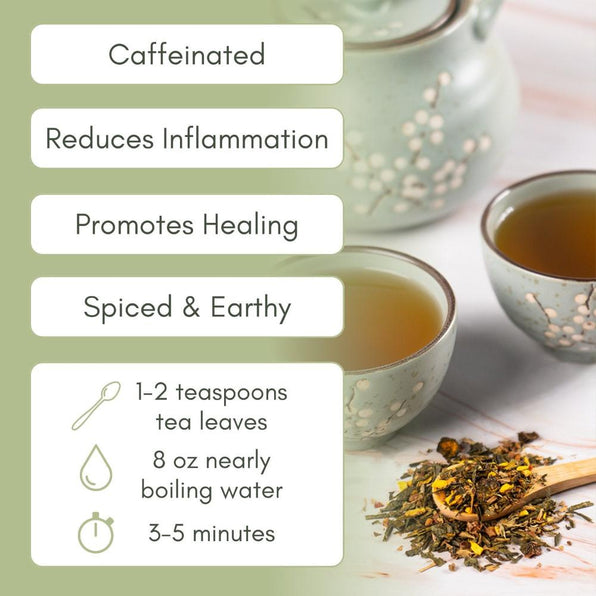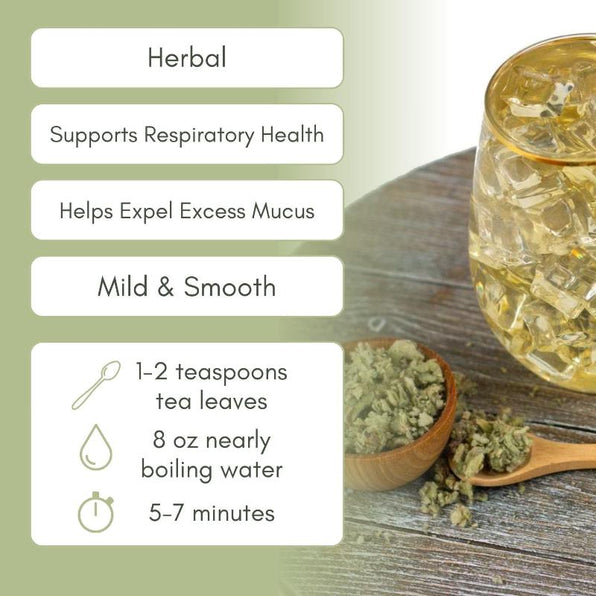If you’ve searched the stores for matcha and chose it based on which was the least expensive, these descriptions might sound familiar. “Green tea powder” “Green tea shake mix” or even “country of origin: China” on the back of the bag. You might think you’re getting a great deal and wonder why anyone would buy the more expensive options. I’ll walk you through exactly what these descriptors mean and why you may not want to choose them next time.
Why you don’t want green tea powder:
Here’s why: “matcha” is a very specific plant, whereas “green tea powder” can be from any old green tea leaf. This means you could be consuming powdered sencha, or other common green tea strain. Matcha is supposed to be a term reserved for tencha leaves that have been ground into a powder.
The effect of using lower quality leaves is duller, darker green colors from sencha leaves and also a lower nutrient profile. The sencha leaves won’t incorporate into the hot water as well as the matcha, whereas the softer matcha will practically disappear if whisked properly.

Matcha also undergoes a much more difficult growing and processing regime. 70% of the sunlight is blocked 25 days before harvest. This goes up to 95% of the sun being blocked 15 days before harvest. Finally, the fields are completely covered days before harvest.
Once the matcha is picked, it is supposed to be stone ground. Our matcha is stone ground with granite, which keeps the leaves cool as they’re ground into a powder. Many other matcha brands are ground in ball and hammer mills, which creates heat during the grinding process, which kills vital nutrients.
What exactly is a green tea mix?
Often, if you see something marketed as a green tea mix on the shelf, matcha will be very low on the ingredient list. This is because it’s chock full of fillers! Matcha may not even make the list of ingredients, because again it could just be green tea powder. It will likely also have added sugar, preservatives, and powdered milk or milk alternatives.
The FDA requires all products to have ingredients listed in order of what is most present. This means, if the first ingredient is sugar, that is the majority of the mix you're buying. The ingredients listed do not have to be equal portions. If the ingredients are sugar, powdered milk, and matcha, this doesn't mean they're all 33.3% present. The ratio could vary as wildly as 80% sugar 15% powdered milk, and only 5% matcha.
What you want is pure matcha for the best health benefits. So if you forget to read the whole package and accidentally wind up with a green tea mix, your best bet is to return it.
Why Matcha's Country of Origin is important:
If you’ve seen yellow, almost brown matcha in the stores, you’ve likely stumbled upon Chinese matcha. They have a different climate from Japan, different regulations and environmental factors, and this comes out in the color of their matcha.

When you see on the matcha bag, “product of China”, or perhaps worse, it doesn’t disclose country of origin, you know it’s a product to avoid. Chinese matcha may include rice fillers to reduce costs, but this greatly diminishes the quality and means you get less authentic matcha for your money.
For centuries, Japan has perfected the art of cultivating and processing matcha, beginning with carefully shading tea plants to enhance their chlorophyll content before hand-picking the finest leaves. These leaves are then steamed, dried, and stone-ground into a fine powder, a meticulous process that has been passed down through generations to preserve the vibrant color, rich flavor, and health benefits that matcha is renowned for today.
Japan is an island country and only 12% of its land is dedicated to farming of all kinds (their local fruits and vegetables included). So, it stands to reason that anything grown there will cost more, since land is such a scarce resource. They are also extremely stringent on their pesticide regulations.
All of these factors combine to make pure matcha a true luxury product. However, this doesn’t mean it has to be inaccessible. We offer a variety of grades of matcha (all produced in Japan, all stone ground) at varying price points. We also make it a point to have discounts and sales available regularly.
Another point to remember with matcha is that a little goes a long way. If you're taking a protein scoop of matcha in your shake each morning, you could be wasting it. The recommended measurement for matcha is 1/2 a teaspoon for every 4 ounces of liquid. Meaning, for your shake in the morning, you might want a maximum of 2 teaspoons of matcha. Conversely, an average protein shake scooper is giving you 4 tablespoons!
What is the least expensive grade of effective matcha green tea powder?
You may wonder what the least expensive matcha is that still offers effective health benefits. Since we only offer Japanese matcha, which is quality controlled, you can confidently choose any of our matchas. For the most cost-effective option, that would be a culinary grade. You can choose if you want organic culinary matcha or conventional culinary matcha.

I recommend using culinary in your smoothies and shaker bottles. If you want to enjoy a cup of whisked matcha, that’s when I recommend our premium grade. We also offer that in organic premium matcha or conventional premium matcha.

